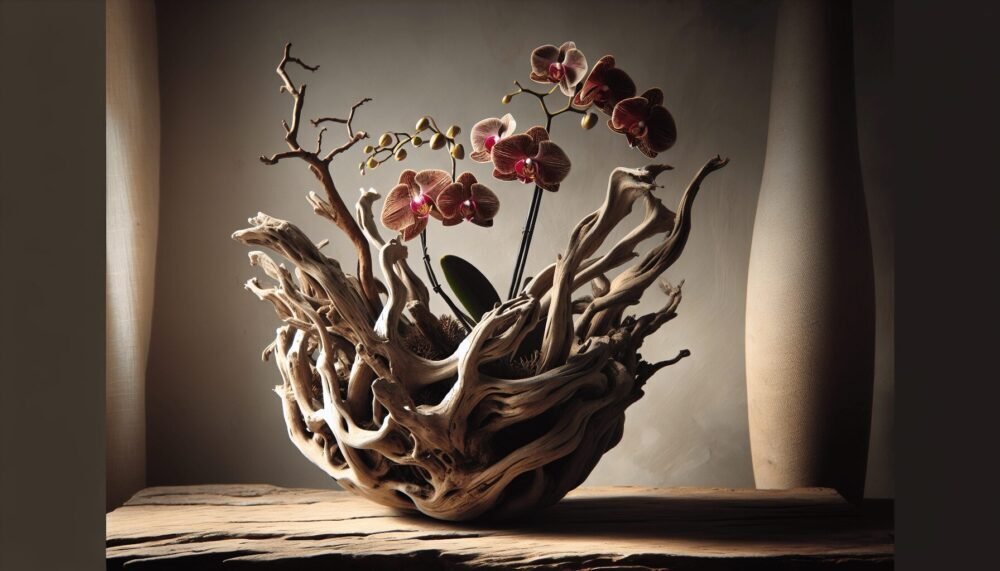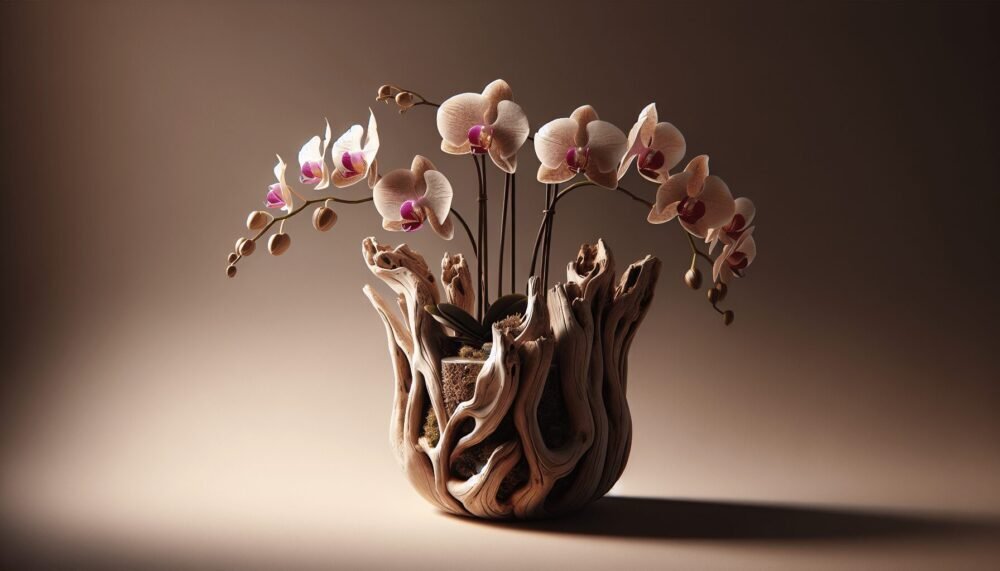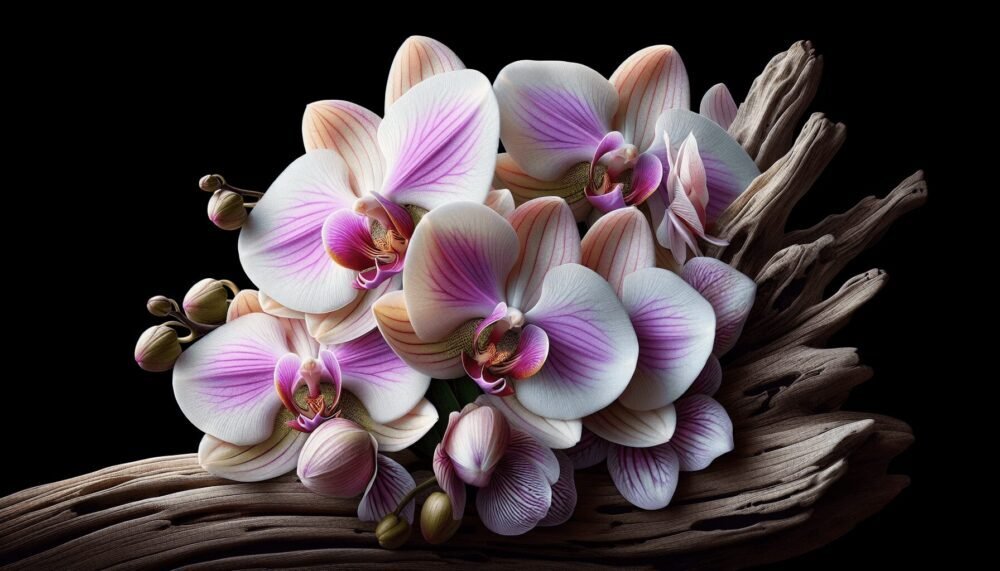Have you ever thought about combining the natural beauty of driftwood with the elegance of orchids? If you’re nodding your head, you’re in for a treat. Let’s discuss how you can transform a piece of driftwood into a stunning orchid planter. This unique gardening project doesn’t just elevate your home decor but also helps create a nurturing environment for your orchids to thrive.
Understanding Driftwood and Its Characteristics
What is Driftwood?
Driftwood refers to wood that has been washed onto a shore or beach of a sea, lake, or river by the action of winds, tides, or waves. It often carries a naturally weathered look, making it a favorite among artisans and gardeners.
Why Use Driftwood for Orchid Planters?
Driftwood offers a rustic, natural aesthetic that perfectly complements the exotic beauty of orchids. Additionally, its porous texture and irregular shape create ideal growing conditions for many orchid species.
Selecting the Right Driftwood
Where to Find Driftwood?
Driftwood can often be found along beaches, lakeshores, and riverbanks. You can also purchase it from craft stores or online marketplaces if you don’t live near a natural source.
Qualities to Look For
When selecting driftwood for an orchid planter, you’ll want to ensure it’s not too brittle and is free from harmful residues. Here are some crucial aspects to consider:
| Quality | Description |
|---|---|
| Size | Choose a piece that fits the space you have in mind for your planter. |
| Sturdiness | Ensure the wood is sturdy enough to hold the orchid and its roots. |
| Shape | Opt for pieces with crevices or hollows, which are ideal for planting. |
| Cleanliness | Look for wood that’s relatively free from algae, salt, and other residues. |

Preparing Driftwood for Planting
Cleaning the Driftwood
Before using driftwood for planting, it’s essential to clean it to remove any potential toxins or pests.
- Rinse the Driftwood: Use a high-pressure hose to rinse off any debris or salt.
- Soak the Wood: Submerge the driftwood in freshwater for at least a week, changing the water daily to ensure all salt and residues are removed.
- Dry the Driftwood: Let it dry thoroughly in a ventilated area, preferably outdoors, but shaded from direct sunlight.
Sterilizing the Driftwood
Sterilization helps to kill any remaining bacteria or fungi.
- Bleach Solution: Soak the driftwood in a bleach solution (1 part bleach to 9 parts water) for 24-48 hours.
- Thoroughly Rinse: After bleaching, rinse the driftwood multiple times to ensure no bleach residue remains.
- Final Soak: Soak the wood in freshwater for another 24 hours to remove any remaining bleach.
Choosing the Right Orchid
Types of Orchids Suitable for Driftwood Planters
Some orchids are better suited to driftwood planters than others. Here are a few species ideal for this setup:
| Orchid Species | Description |
|---|---|
| Phalaenopsis | Known as the moth orchid, Phalaenopsis are easy to grow and adapt well to mounting. |
| Dendrobium | These orchids can thrive on driftwood and produce stunning, long-lasting flowers. |
| Oncidium | Also known as dancing lady orchids, they enjoy the airy environment driftwood provides. |
| Cattleya | These orchids have thick roots that grip well onto rough surfaces like driftwood. |

Mounting Your Orchid onto Driftwood
Materials Needed
Before you start, gather these materials:
- Driftwood
- Orchid plant
- Fishing line or floral wire
- Sphagnum moss
- Scissors
- Spray bottle
Step-by-Step Guide
- Dampen the Moss: Wet the sphagnum moss to make it easier to work with.
- Prepare the Orchid: Remove the orchid from its pot, gently shaking off any loose soil from its roots.
- Apply Moss to the Roots: Wrap the orchid roots in the damp sphagnum moss to help retain moisture.
- Position the Orchid: Find a crevice or hollow in the driftwood and position your orchid there.
- Secure the Orchid: Using fishing line or floral wire, securely fasten the orchid to the driftwood. Make sure to tie it firmly but not too tight to avoid damaging the roots.
- Spray Water: Once mounted, spray the orchid and moss with water to keep the environment moist.
Maintaining Your Driftwood Orchid Planter
Watering
The frequency of watering will vary based on the type of orchid, the humidity in your environment, and the dryness of the driftwood. Generally:
- Watering Frequency: You should mist the orchid and moss every day or every other day.
- Deep Watering: Once a week, soak the entire driftwood piece in water for 30 minutes to ensure thorough hydration.
Lighting
Orchids need bright, indirect light to thrive. Placing your driftwood orchid planter near an east or west-facing window usually provides the perfect light conditions.
Fertilizing
Regular fertilizing can enhance the growth and flowering of your orchid.
- Type of Fertilizer: Use a balanced orchid fertilizer, usually diluted to half strength.
- Frequency: Fertilize every two weeks during the growing season and cut back to monthly during the dormant period.
Benefits of Driftwood Orchid Planters
Aesthetic Appeal
Driftwood orchid planters are living works of art. They add a unique, organic focal point to any room or outdoor space.
Encourages Healthy Root Growth
The rough, porous texture of driftwood provides an excellent environment for the orchid roots to attach and grow, mimicking their natural habitat.
Eco-friendly
Using driftwood is a great way to repurpose a natural resource. It often promotes a sense of tranquility and connection with nature.
Challenges You Might Face
Maintaining Moisture Levels
Driftwood can sometimes dry out quickly, requiring frequent watering or misting. You might need to experiment to find the right balance.
Pests
Keeping the driftwood orchid planter indoors can deter pests, but outdoor settings might attract insects. Regularly checking your plant and treating any issues promptly can mitigate this.
Root Attachment
Initially, the roots might take some time to attach firmly to the driftwood. Be patient and continue to provide the right conditions, and the orchid will eventually secure itself.
Frequently Asked Questions
How Long Does It Take for Orchids to Attach to Driftwood?
This can vary, but you can generally expect the roots to start attaching within a couple of weeks to a few months.
Can I Use Any Type of Driftwood?
It’s best to use hardwood driftwoods like oak, mahogany, or teak. Softer woods tend to deteriorate faster and may not provide the longevity you desire.
Is Driftwood Harmful to Orchids?
When properly cleaned and sterilized, driftwood is safe for orchids and can actually support healthier growth compared to other planting mediums.
Conclusion
Creating a driftwood orchid planter is not only a rewarding hobby but also adds a touch of natural elegance to your space. With the right materials, a little patience, and proper care, you can enjoy a thriving, beautiful orchid that looks like it came straight from an exotic forest.
Taking the time to select and prepare the driftwood, choose the right orchid, and maintain the setup will ensure that your planter remains a stunning focal point in your home for years to come. This combination of driftwood and orchid is truly a match made in botanical heaven. So, why not give it a try? Your indoor garden will thank you!



